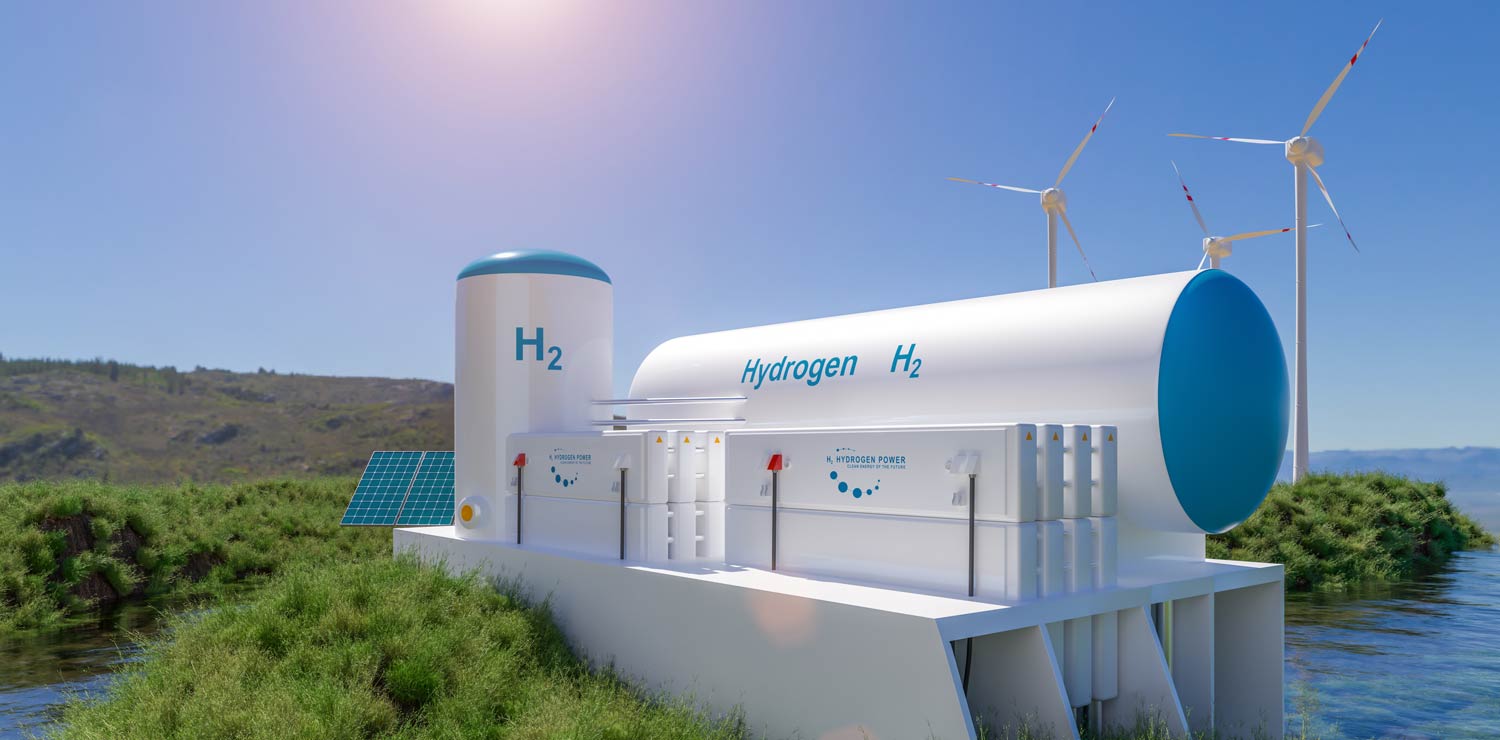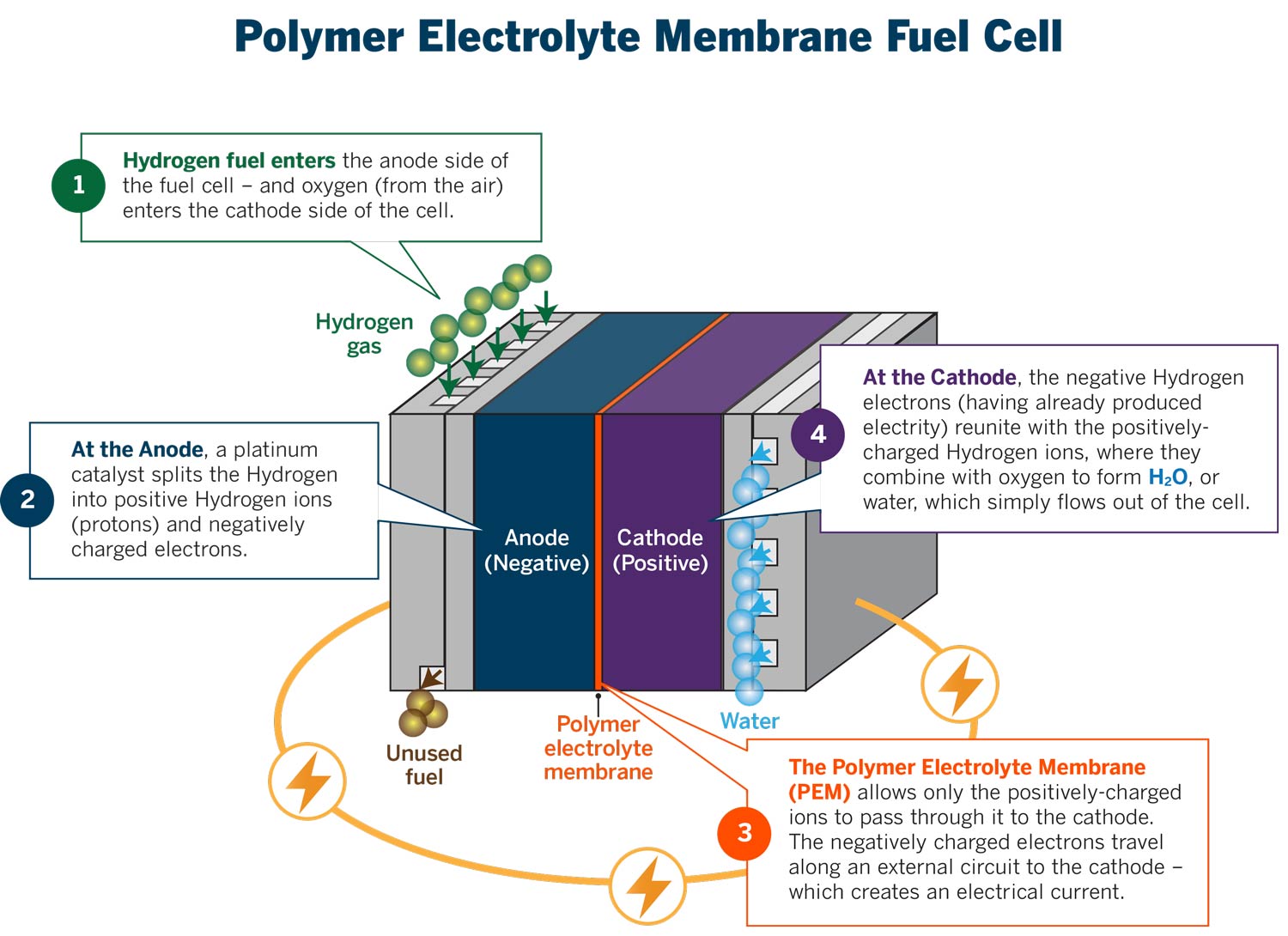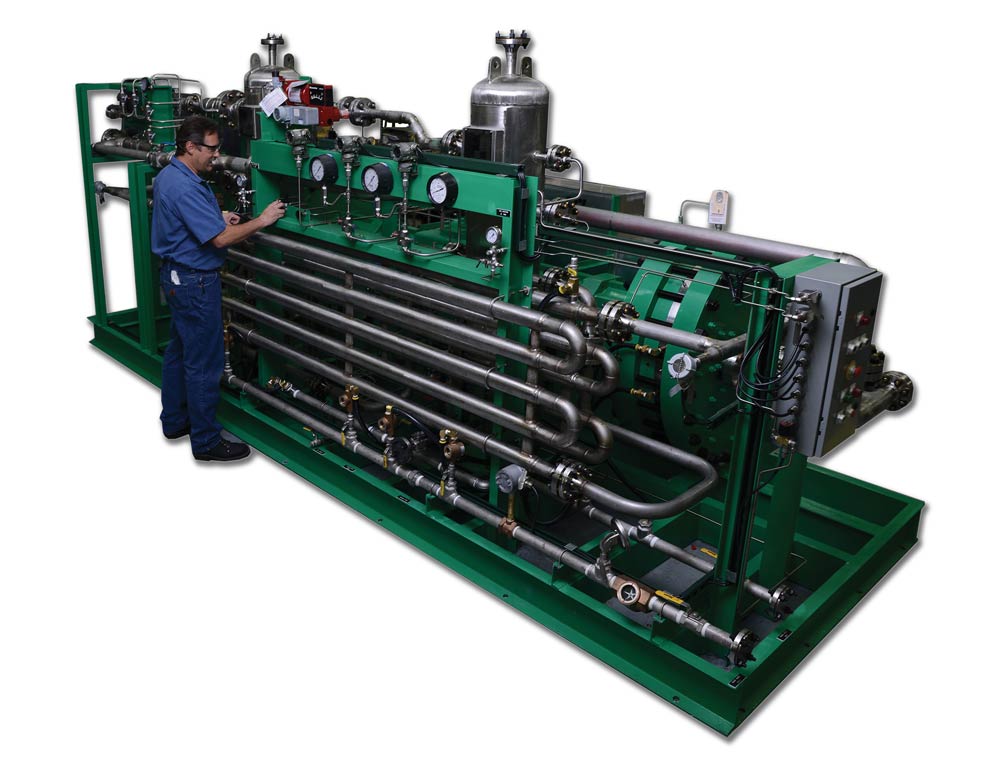
What are Hydrogen Fuel Cells?
Hydrogen fuel cells produce electricity in a similar way that lithium-ion battery cells power electric cars – but Hydrogen fuel cells do not run down or need recharging.
Like a battery, a Hydrogen fuel cell consists of two electrodes: a negative electrode (or anode) and a positive electrode (or cathode)—sandwiched around a polymer electrolyte membrane.
Process for Hydrogen Fuel Cells
Hydrogen (stored in tanks or reformers) is fed using Sundyne PPI compressors to the anode side of the fuel cell, while oxygen (from the air) is fed to the cathode side. On the anode side, a catalyst (typically platinum) splits hydrogen molecules into protons and electrons. The negatively-charged electrons go through an external circuit, where they generate electricity. The protons migrate through the electrolyte to the cathode. Once the electrons complete their journey, they reunite with the protons, and combine with the oxygen to produce water (and heat).

Fuel cells generate direct current (DC) from the electro-chemical reactions in the fuel cell. In most cases, a single fuel cell produces less than 1 Volt – so individual cells are combined into stacks consisting of hundreds of fuel cells.
Fuel cell performance improves as the pressure of the reactant gases increases; therefore fuel cell systems require compressors to raise inlet pressure several times greater than the pressure of the ambient atmospheric pressure. Sundyne PPI Diaphragm compressors are preferred for this application, because their design ensures no leakage, and they also prevent contaminants (oil, or hydraulic fluid in the compressor) from mixing with the Hydrogen.
The electricity created from a Hydrogen Fuel cell (much like a Lithium Ion Battery), is used to power a vehicle’s electric motor. Hydrogen fuel cells vehicles (FCVs) create no tailpipe emissions and very low noise. The only by-products are warm air and water vapor, which exits the tailpipe of the vehicle.
Many in the auto industry see FCVs as complementing EVs rather than replacing them. Hydrogen is seen as a much more efficient choice for heavier vehicles that drive longer distances. Driving ranges and refueling times for FCVs are already comparable to diesel vehicles, whereas EVs require hours to recharge and provide only a few hundred kilometers of range.

For more information on the PPI line of compressors that power FCVs, please click here.



